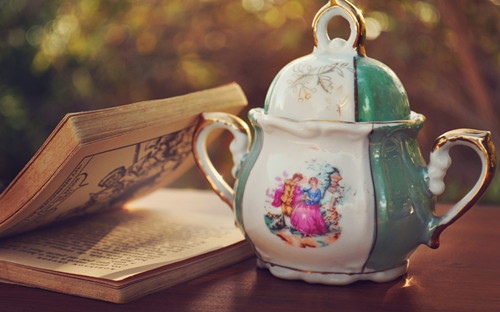
写出两个使用形容词的比较级和最高级的句子。
He is taller than her.She is thinner than her sister.Tom is more handsome than Tim.Mary is happier than Kate.I have more questions than you.My shoes are bigger than yours.Your coat is larger than mine.Your hair is longer than mine.She is nicer than her sister.John has more money than I.I am the tallest in our class.My movements are the most graceful of us three. Racing is the most interesting sport I've ever known. You are always my fondest star. Zhang Hua is the tallest of the three. He works (the) hardest in his class. How much did the second most expensive hat coat? He is the tallest(boy) in his class. 0f all the boys he came(the) earliest.The Yellow River is the second longest river in China.黄河是中国第二长河. They are happiest on Saturdays.他们在星期六最快乐. He is the youngest and tallest boy in his class.他是班上年龄最小、个子最高的男孩. That book is most interesting.那本书非常有趣. I found it most difficult to get to sleep.我发现入睡最难. With best wishes for you.向你致以最美好的祝愿.
副词最高级和形容词最高级
形容词、副词的比较级和最高级的构成规则 1.一般单音节词和少数-er,-ow结尾的双音节词,比较级面加-er,最高级在后面加-est;(1)单音节词 如:small→smaller→smallest short→shorter→shortest tall→taller→tallest great→greater→greatest (2)双音节词 如:clever→cleverer→cleverest narrow→narrower→narrowest 2.以不发音e结尾的单音节词,比较在原级后加-r,最高级在原级后加-st; 如:large→larger→largest nice→nicer→nicest able→abler→ablest 3.在重读闭音节(即:辅音+元音+辅音)中,先双写末尾的辅音字母,比较级加-er,最高级加-est; 如:big→bigger→biggest hot→hotter→hottest fat→fatter→fattest 4.以“辅音字母+y”结尾的双音节词, 把y改为i,比较级加-er,最高级加-est; 如:easy→easier→easiest heavy→heavier→heaviest busy→busier→busiest happy→happier→happiest 5.其他双音节词和多音节词,比较级在前面加more,最高级在前面加most; 如:beautiful→more beautiful→most beautiful different→more different→most different easily→more easily→most easily 注意:(1)形容词最高级前通常必须用定冠词 the,副词最高级前可不用. 例句: The Sahara is the biggest desert in the world. (2) 形容词most前面没有the,不表示最高级的含义,只表示非常. It is a most important problem. =It is a very important problem. 6.有少数形容词、副词的比较级和最高级是不规则的,必须熟记. 如:good→better→best well→better→best bad→worse→worst ill→worse→worst old→older\\\/elder→oldest\\\/eldest many\\\/much→more→most little→less→least far →further\\\/farther→ furthest\\\/farthest 二、形容词、副词的比较级和最高级的用法 1.“A + be +形容词比较级 + than + B” 意思为“A比B更……”. 如:This tree is taller than that one. 这棵树比那棵树高. 注意: ① 在含有连词than的比较级中,前后的比较对象必须是同一范畴,即同类事物之间的比较. ②在比较级前面使用much,表示程度程度“强得多”. 如:A watermelon is much bigger than an apple. ③ very, quite一般只能修饰原级,不能修饰比较级. 2.“比较级 + and + 比较级”或“more and more +原级”表示“越来越……” 如:It becomes warmer and warmer when spring comes. 春天来了,天气变得越来越暖和了. It is getting cooler and cooler. 天气越来越凉爽. The wind became more and more heavily. 风变得越来越大. Our school is becoming more and more beautiful. 我们的学校变得越来越美丽. 3.在含有or的选择疑问句中,如果有两者供选择,前面的形容词要用比较级形式. 如:Who is taller,Tim or Tom? 谁更高,Tim还是Tom? 4. “the +比较级……, the+比较级”,表示“越……越……”. The more money you make, the more you spend. 钱你赚得越多,花得越多. The sooner,the better. 越快越好. 5. 表示倍数的比较级用法: ①. A is …times the size \\\/height\\\/length\\\/width of B. 如:The new building is three times the height of the old one. 这座新楼比那座旧楼高三倍.(新楼是旧楼的四倍高) ②. A is …times as big \\\/high\\\/long\\\/wide\\\/large as B. 如:Asia is four times as large as Europe. 亚洲是欧洲的四倍大.(亚洲比欧洲大三倍) ③. A is …times larger \\\/higher\\\/longer\\\/wider than B. 如:Our school is twice bigger than yours. 我们学校比你们学校大两倍. 6.形容词、副词的最高级形式主要用来表示三者或三者以上人或事物的比较,表示“最……”的意思. 句子中有表示范围的词或短语.如:of the three, in our class等等. 如:He is the tallest in our class. 他在我们班里是最高的. 7.否定词语+比较级,否定词语+ so… as结构表示最高级含义. Nothing is so easy as this. =Nothing is easier than this. =This is the easiest thing. 8. 比较级与最高级的转换: Mike is the most intelligent in his class. Mike is more intelligent than any other student in his class 7.修饰比较级和最高级的词 1)可修饰比较级的词 ①.a bit, a little, rather, much, far, by far, many, a lot, lots, a great deal, any, still, even等. ②. 还可以用表示倍数的词或度量名词作修饰语. ③. 以上词(除by far)外,必须置于比较级形容词或副词的前面. 注意: 使用最高级要注意将主语包括在比较范围内. (错) Tom is the tallest of his three brothers. (对) Tom is the tallest of the three brothers. 2)下列词可修饰最高级:by far, far, much, mostly, almost. This hat is nearly \\\/ almost the biggest. 注意: a. very可修饰最高级,但位置与much不同. This is the very best. This is much the best. b. 序数词通常只修饰最高级. Africa is the second largest continent. 8.要避免重复使用比较级. (错) He is more cleverer than his brother. (对) He is more clever than his brother. (对) He is cleverer than his brother. 9.要避免将主语含在比较对象中. (错) China is larger that any country in Asia. (对) China is larger than any other country in Asia. 10.要注意对应句型,遵循前后一致的原则. The population of Shanghai is larger than that of Beijing. It is easier to make a plan than to carry it out. 11.要注意冠词的使用,后有名词的时候,前面才有可能有名词. 比较:Which is larger, Canada or Australia? Which is the larger country, Canada or Australia? She is taller than her two sisters. She is the taller of the two sisters.
形容词比较级和最高级的不规则变化有哪些
变化规则 大多数形容词和副词有比较级和高级的变化,即原级、比较级和高级,用来表示事物的等级差别。
原级即形容词的原形,比较级和高级有规则变化和不规则变化两种。
(1)单音节词加词尾-er,-est来构成比较级和高级。
tall(高的) taller tallest great(巨大的) greater greatest (2)以不发音的e结尾的单音节词只加-r,-st nice(好的) nicer nicest large(大的) larger largest able(有能力的) abler ablest (3)以一个辅音字母结尾的闭音节单音节词,双写结尾的辅音字母,再加-er,-est big(大的) bigger biggest hot热的) hotter hottest red红色的 redder reddest (4)以辅音字母+y结尾的双音节词,改y为i,再加-er,-est easy(容易的) easier easiest busy(忙的) busier busiest (5)以ly结尾的副词,除early-earlier-earliest,其他都是加more most. Slowly-more slowly-most slowly Bravely-more bravely-most bravely quickly-more quickly-most quickly (6)少数以-er,-ow结尾的双音节词未尾加-er,-est clever(聪明的) cleverer cleverest narrow(窄的) narrower narrowest (7)其他双音节词和多音节词在前面加more,most来构成比较级和高级。
如: important(重要的) more important most important easily(容易地) more easily most easily (8)一些词的比较级和高级,可以加-er或 -est,也可以加more或most,如:clever, polite等。
(9) 不规则变化 有一些词的比较级、高级变化是不规则的,需要特殊记忆。
如: good \\\/ well→better→best bad \\\/ ill\\\/badly→worse→worst many \\\/ much→more→most little→less→least far→farther→farthest(表示距离) \\\/ far→further→furthest (表示程度) old→older \\\/ elder→oldest (表示新旧或年龄) \\\/ eldest (表示兄弟姐妹之间的长幼关系) 副词的比较级和高级的构成规则和形容词比较级和高级的构成规则一样,所不同的是:形容词高级前面必须用the,而副词的高级前面的the可带可不带。
一些词本身没有比较级和高级形式,如:right, wrong, full, empty, round, complete, wooden, dead, daily等。
long-longer-longest young-younger-youngest old-older\\\/elder-oldest\\\/eldest short-shorter-shortest high-higher-highest deep-deeper-deepest small-smaller-smallest big-bigger-biggest tall-taller-tallest loud-louder-loudest low-lower-lowest thin-thiner-thinest fat-fatter-fattest great-greater-greatest nice-nicer-nicest happy-happier-happiest heavy-heavier-heaviest cheap-cheaper-cheapest near-nearer-nearest clean-dleaner-cleanest few-fewer-fewest late-later-latest angry-angrier-angriest busy-busier-busiest lazy-lazier-laziest hot-hotter-hottest glad-gladder-gladdest clear-clearer-clearest strong-stronger-strongest lucky-luckier-luckiest interesting-moreinteresting-most interesting difficult-more difficult-most difficult expensive-more expensive-most expensive 形容词比较级的用法 1. 两者比较时用形容词比较级,其结构为“... 比较级 + than ...”。
如:Actions speak louder than words. 2. 在两者之间选择“哪一个更……”时,用句型“Which \\\/ Who is +比较级, ... or ...?”。
如:Which sweater is cheaper, the red one or the yellow one? 3. 表示“两者之间……的一个”时,用“the + 比较级”。
如:Lucy is the taller of the twins. 4. 表示“越……,越……”时,用“the + 比较级,the + 比较级”。
如:The more you eat, the fatter you will become. 5. 表示“越来越……”时,用“比较级 + and + 比较级”,多音节词和部分双音节词用“more and more + 形容词原级”。
如:We should make our country more and more beautiful. 6. 形容词比较级前可以用下列词修饰:much, a little, far, a bit, a few, a lot, even, still, rather等。
如:It's much colder today than yesterday. 形容词高级的用法 1. 三者或三者以上的人或物进行比较时,用形容词高级形式。
形容词高级前通常需加定冠词the,句末常接in \\\/ of短语来表示范围。
如:He is the strongest of all the boys. 2. 表示“……之一”时,用“one of + the + 高级”。
如:The light bulb is one of the most helpful inventions. 3. 形容词高级前可以由物主代词、指示代词、名词所有格等修饰,此时不用定冠词the。
如:Yesterday is her happiest day in her life 修饰语 1. 比较级的修饰语 Much(……得多),far(……得多),even(甚至,更),still(更),a bit(有点),a little(有点),a lot(很), a great deal(大大地), twice(两倍), five times(五倍), two-fifths(五分之二), a half(一半)等修饰比较级表示程度,但决不可用very修饰。
eg. Tom is a little taller than Mike. Tom比Mike稍高一点; It is even colder today than yesterday. 今天甚至比昨天更冷 2.高级的修饰语 By far\\\/ far and away ,很 much ……得多 almost 几乎 nearly 几乎 另外,second, third, next 等也要放在定冠词之后。
如: The Yellow River is the second longest in China. 黄河是中国的第二大河。
This is the third largest building in this city. 这是这个城市里第三大的建筑物。
The Yellow River is the second longest river in China. 黄河是中国第二长河。
This is (by) far the best book that I've ever read. 这是我读过的好的书。
词汇积累是英语学习的基础,词汇量的多少直接影响到学生的英语写作及口语水平,提高英语单词的记忆效率是进行高效英语学习的基石。
形容词,原级,比较级和最高级的构成方法
1 形容词原级、比较级、最高级的用法讲解及练习形容词的概述(一)形容词的定义及位置形容词原级(原形)的用法说明人或事物的特征、性质或状态,常用来修饰名词或某些代词的词叫做形容词。
形容词一般放在名词前,在句子中可作定语、表语宾语补足语等1、作定语,放在名词之前,不定代词之后。
如:The beautiful girl is my sister I have something important to tell he.2作表语,放在系动词之后。
如:Our school is big and cleanI felt terrible this morning. 3、作宾语补足语,放在宾语之后。
如:you must keep your hands open. I find it hard to travel around the mountain.4、某些形容词放在定冠词之后,变成名词,表示一类人。
常见的有good\\\/bad;rich\\\/poor;young\\\/old;deaf\\\/blind;black\\\/white;living\\\/dead等。
如:The rich should help the poor. The young should be polite to the old. 知识拓展:有表示绝对概念的副词very, so, too, enough, quite等修饰时用形容词原级。
如:The boy is too young. 这个男孩太小。
(二)形容词的种类 形容词可以表示质量、大小、新旧、形状、颜色、产地、温度等1)表示质量:a beautiful coat; 2)表示大小:a big pig; a small cap; a little goat等。
3)表示新旧:a new bag; an old bike等。
4)表示形状:a round chair; a tall building等。
5)表示颜色:blue sky; a white cat; a red skirt等。
6)表示产地:a Japanese jeep; a Chinese car等。
(7)表示温度:the low temperature; a cool day形容词的构成1)名词+ful 。
help ---helpful; care---careful等。
2)名词+y 。
rain---rainy; wind-windy cloud-cloudy; sun---sunny等。
(3)名词+ing 。
interest---interesting; surprise---surprising等。
(4)wool---woolen; friend---friendly; hundred-meter(race); kind-hearted等。
形容词的比较级最高级变化规则及其应用一)形容词比较级、最高级的规则变化 .大多数形容词一般在词尾直接加-er,-est , 如:short—shorter—shortest;tall—taller—tallest; 2.以字母e 结尾的形容词加-r,-st ,如:nice—nicer—nicest late—laterlatest; large—larger—largest 3.以辅音字母加y结尾的形容词变y为i再加--er ,--est, 如:early—earlier—earliest heavy heavier—heaviest; busy—busier—busiest 4.以重读闭音节以一个元音字母和一个辅音字母结尾,应双写末尾的辅音字母再加-er,-est,
英语形容词和副词的比较级和最高级的总结
只要记住形是用来修饰名词性的单词组就可以比较级通常为在上加“er“,而最高级则是在形容词前面加定冠词the,同时形容词本身加后缀est clear, clearer, the clearest但有两种情况除外:1.是特殊形容词,其比较级和最高级都要变形,比如:much\\\/many,比较急more,最高级the most,far, farther, farthest2.在形容词为多音节词时,则比较及为加more+形容词原形,最高级则为the most+形容词原形, 比如:beautiful, more beaufitul, the most beautiful



